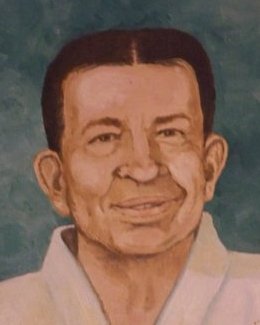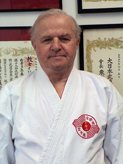Jiu-Jitsu Misinformation
Misinformation about Dewey Deavers and Joseph Hedderman
Most of the information about Dewey Deavers that is available on the internet is incorrect or unsubstantiated. A large majority of the websites that provide information about Dewey Deavers all relate the same information which is taken from John Corcoran and Emil Farkas’ book Martial Arts: Traditions, History, People.
On page 235, Corcoran and Farkas state that
"Dewey Deavers, a jujutsu and karate instructor who reportedly traveled in China and Japan in the 1920s, surfaced around 1954 in Pittsburgh. By then he had already trained two students to the rank of black belt: Warren Siciliano and Larry Williams."
Joseph Hedderman, who studied jiu-jitsu under Dewey Deavers for 23 years until Deaver’s death, remarked that Deavers never once mentioned traveling to China or Japan. While it is possible that he did travel there in the 1920s, it is more probable that he did not. Deavers was, however, familiar with Chinese gung-fu. During the Depression he worked at a Chinese restaurant in Pittsburgh’s Chinatown section where he put on jiu-jitsu demonstrations for the restaurant’s patrons. The restaurant also featured several gung-fu practitioners whom Deavers would often train with.
The statement about Deavers having "surfaced around 1954 in Pittsburgh" is also incorrect. Deavers founded his school in Pittsburgh in 1927. He remained a resident of Pittsburgh until his death in 1973.
Corcoran and Farkas also incorrectly state that Deavers was a karate instructor. Although Deaver’s style of jiu-jitsu has a significant amount of striking techniques, it would be incorrect to refer to him as a karate instructor. Deavers studied jiu-jitsu under Japanese natives in the United States prior to karate being introduced to mainland Japan from Okinawa.
Additionally, Warren Siciliano’s and Larry William’s achieving the rank of black belt under Dewey Deavers is unsubstantiated. In the 1960s, Joseph Hedderman read in a martial arts magazine about Warren Siciliano claiming to have studied under Dewey Deavers. When asked about Siciliano, Deavers confirmed that Siciliano was a student of his in the late 1940s. However, Deaver’s promotion records for the school, which date back to 1939, do not include Warren Siciliano, or Larry Williams, being promoted to the rank of black belt.
Corcoran and Farkas’ book also incorrectly state on page 235 that
"Around this time [1958-1959] Walter Mazak and Joe Hedderman opened a dojo in Pittsburgh, Hedderman was a student of Chito-stylist William Dometrich."
In 1954, Deavers formed an Executive Committee to handle the day-to-day operations of his school. Both Joseph Hedderman and Walter Mazak, who was a student of Deavers from the early 1940s, were members of this committee. Mazak and Hedderman never opened their own school. They inherited Deaver’s school when he died in 1973. Mazak’s death in 1975, left Hedderman as the only remaining member of the Executive Committee Deavers formed.
Corcoran and Farkas’ book is also incorrect in that it implies that Hedderman was a student of William Dometrich in the 1950s. While Hedderman did become a Chito-ryu karate student of William Dometrich, this did not occur until 1972.

